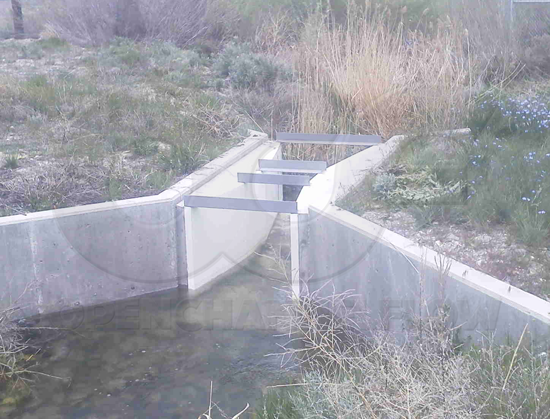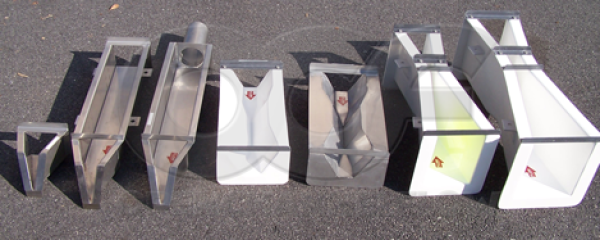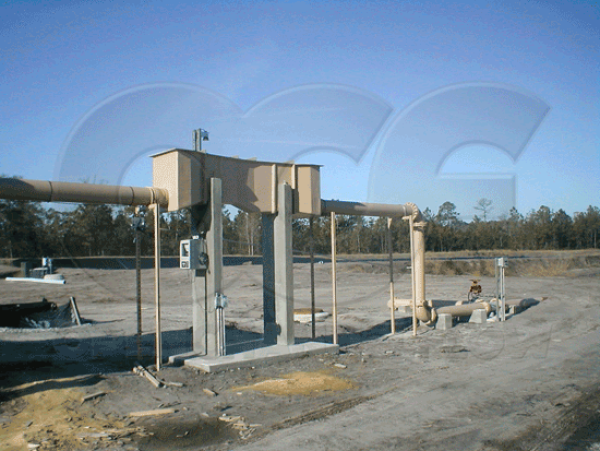This website uses a variety of cookies, which you consent to if you continue to use this site. You can read our Privacy Policy for
details about how these cookies are used, and to grant or withdraw your consent for certain types of cookies.
Selecting a Primary Device: Choosing a Weir or Flume Size
In our series on Selecting a Primary Device we looked at: Choosing Between a Weir and a Flume and Choosing a Weir or Flume Style. In this closing article we now look at sizing a weir or flume.
The basic consideration in sizing a particular style of weir or flume is whether the device can handle the range of flows; whether the minimum / maximum expected flow rates fall within the useful range of flows that a device can measure.
Minimum Flow Rates
Understand that all primary devices have a minimum flow rate (or head) below which their accuracy and usefulness are questionable. The minimum flow rate / head should be viewed as a hard number. Guidelines do not exist as the amount that a device’s accuracy degrades when flow / head drops below this minimum level.

Discharge Tables
Flow / discharge tables from flume, weir, or flow meter manufacturers that purport to provide flow numbers down to zero should be viewed with considerable skepticism as this indicates either a lack of knowledge or, more troublingly, a desire to appease customers that “want the meter to read down to zero.”
Flow Meters
Certainly secondary devices (flow meters) will read to zero (and sometimes below, when they aren’t properly calibrated), but it is important to understand that below the minimum rated flow / head, the primary device no longer exhibits the same accuracy as it does in its range of rated flows – and there is no direction that can be given or correction that can be applied to quantify this difference.
Weirs
The minimum head for a thin-plate weirs (V-notch and Rectangular) weir is 0.2-feet [6.096 cm] to prevent the nappe from clinging to the crest or downstream face of the weir.
Flumes
The minimum flow rates for flumes vary both by style (e.g. Parshall vs. Cutthroat) and by flume size (e.g. 1-inch vs. 60-inch). In general, though, H Type flumes can accurately measure the lowest flow rates, then Trapezoidal / RBC. Parshall, Montana, and Cutthroat flumes have good low end flow rates, while Palmer Bowlus flumes have high minimum flow rates.
Maximum Flow Rates
As all primary devices have a minimum flow rate / head, they likewise have a maximum flow rate / head above which their accuracy is questionable or which will overtop a standard height device. In general, even when the maximum flow rate is know for some certainty, Openchannelflow suggests applying a margin of at least 10% to account for unforeseen conditions.
Weirs
For V-notch weirs, the maximum head is 2.0-feet [60.996 cm].
For Rectangular weirs (with and without end contractions), the maximum head is one half of the crest length. Laboratory experiments have shown that exceeding this limit does not greatly impact flow accuracy, particularly for crest lengths from 1 to 4-feet [30.48 to 121.9 cm], but to ensure maximum accuracy the limit of one half of the crest length is usually adhered to.
Flumes
In rating flumes, researchers have usually not calculated flow rates to the very top of the flume – intuitively understanding that there may be fluctuations, minor surface waves, the occasional boil, etc. in the water’s surface. This reserve head (distance from the top of the flume down to the surface of the water at the maximum rated discharge) accommodates these natural changes that occur in a flume under operating conditions.
For Parshall and Montana (short Parshall) flumes, the reserve head is about 1/6th of the flume’s depth.
For RBC flumes the reserve head height is 1/8th the flume’s depth.
For Trapezoidal flumes the reserve head height should be 1/9th of the flume’s depth.
Unlike other flumes where there is a given distance between the water level in the flume at the maximum rated discharge and the top of the flume, the H-flumes and Cutthroat flumes are rated to the very top of the flume. Any increase in flow, ripples, waves, or surface turbulence at this level will overtop the flume so care must be when operating these flumes near their maximum rated flow rates.
Discharge Tables
It is important to note that some flume and flow meter manufactures rate Trapezoidal flumes to the top of the flume. This overstates the maximum flow rates as rated by the various flume investigators and leaves not reserve for fluctuations in the surface of the water!
Peaking Factors
When the maximum expected flow rate is unknown it is common to apply a peaking factor of 2.5 times the anticipated average flow rate. This rule of thumb may, or may not, be sufficient for a given application. Storm water or batch discharge flows in particular may require larger peaking factors as the volumes of water in these applications tends to be large at first and then diminishing.
In some instances where even average flow are unknown, tables exist for certain site conditions that provide guidelines as to the range of flows to be expected based upon some criteria (e.g. number of households, square footage of paved areas).
When in doubt it is better to oversize a device than to undersize a device. While resolution may be reduced in an oversized device, that is preferable to a device that overtops or otherwise misses top end flows.
Previously…
In this series on Selecting a Primary Device we've covered:
While these articles many important topics, they should not be considered to be all-inclusive. When in doubt, use conservative assumptions and reach out to knowledgeable manufacturers.
At Openchannelflow, we are here to help!
Image: Institute for Land and Water Management Research
Related Blog Posts
Explore more insights in our blog.

LOCATIONS IN ATLANTA, GA & BOISE, ID




